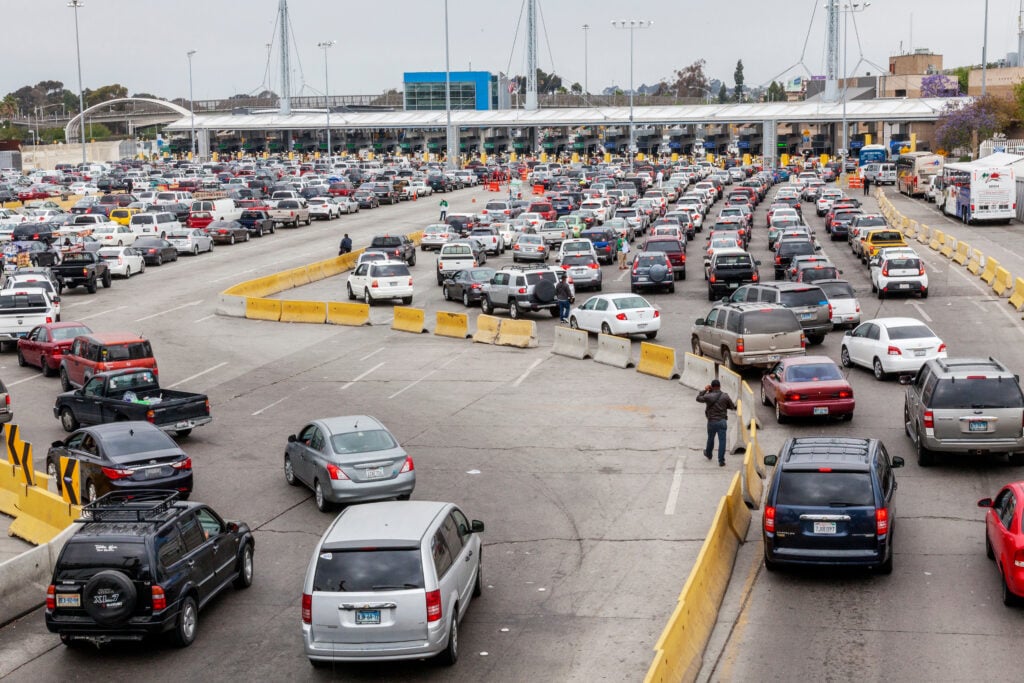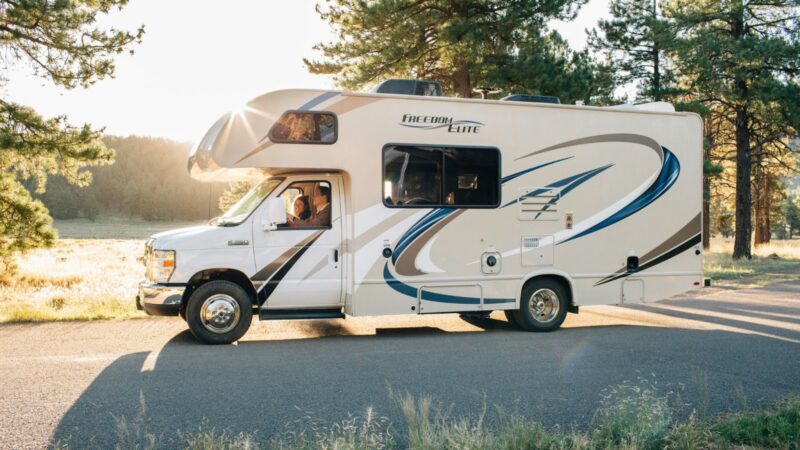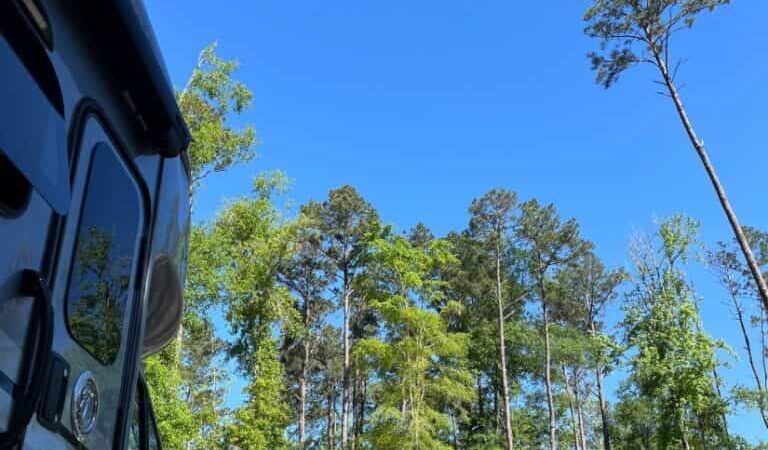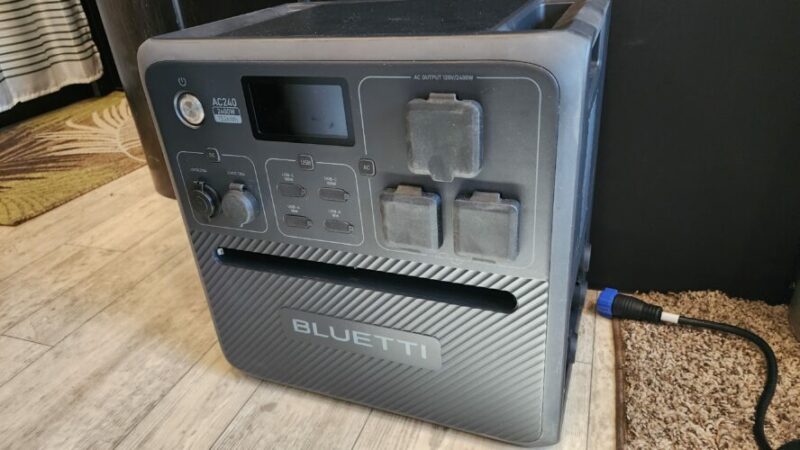RV Border Crossing: What You Should Know Before Visiting Canada Or Mexico

Crossing The Border In Your RV: What You Should Know
RVing is a popular practice around the world, so many travelers want to take international trips. Lots of RVers dream of taking the long pilgrimage through Canada to Alaska, while others want to enjoy the sunny weather in Mexico. But there are rules you need to follow if a border crossing is part of your trip.
With the right preparation, you can absolutely drive an RV into another country. You just need to be prepared for additional security checks and a few restrictions. You’ll definitely need to plan ahead if you want to cross international borders because these are carefully guarded. Make sure you have all your necessary documents in hand and ditch any forbidden items.
Fortunately, plenty of RVers have been in your shoes, so you don’t have to figure everything out yourself. There are well-established rules and practices at each border, although the specifics may vary depending on whether you’re going to Canada or Mexico. Let’s take a closer look at the ins and outs of an RV border crossing.
General guidelines and essential tips
Each nation has its own rules for border crossings, but there are some general tips you should follow if you plan to travel out of your home country. Follow the list below as you make early preparations for your trip.
Bring passports for every passenger
Everyone in your travel party needs to have a valid proof of identification/citizenship. A passport is the most widely used and accepted format, but there are other options that might work too.
Possible alternatives include:
- An original birth certificate
- Original certificate of naturalization or citizenship
- A Certificate of Indian Status
- A US Permanent Resident Card
- Photo Identification
You may need to bring multiple forms of ID if you don’t have a passport, so be sure to cover all your bases. In addition, you should double-check your passport expiration dates. Sometimes they won’t be accepted within six months of expiration, so you should be mindful of your timing.
Vehicle paperwork
Border agents are used to dealing with cars every day, but RVs are a bit more unusual. You may be under greater scrutiny as a result. You don’t necessarily need to provide vehicle paperwork at the border, but it’s good to have it ready for your travels anyway.
Important documents include your vehicle registration, a valid driver’s license, your insurance information, and maybe even a roadside assistance plan. Be sure to have all the necessary information for your tow vehicle and trailer.
Check contraband lists and plan accordingly
Countries have the right to control what crosses over their borders. Even if something is perfectly legal in your country, you may need to leave it behind if it gets you into trouble at the border check.
The specific rules about contraband vary depending on where you’re traveling, plus the rules can be updated at any time. However, you should generally avoid traveling with live plants and non-pet animals, fresh produce, fireworks, and alcohol.
There are sometimes ways to bring firearms across international borders, but you’ll need to go through a lengthy process and pay extra fees.
For instance, Canada has strict gun control laws. While firearms are owned and used in Canada, the rationale of “self-defense” is not a valid reason to acquire or possess a firearm in Canada. Travelers can bring certain types of firearms, especially hunting rifles, into Canada for purposes such as sport shooting or hunting, but they must declare them at the border and meet specific requirements. This might include having the appropriate permits, ensuring the firearm is stored and transported correctly, and potentially other conditions.
Due to the stringent regulations and potential for misunderstandings or issues at the border, many individuals find it simpler to leave their firearms behind when traveling to Canada unless they have a specific reason, like a hunting trip.
Prepare local currency ASAP
You might assume that you can still use US currency during your travels. When you’re close to the border, this is generally true, but you should still have some local currency on hand for emergencies. Be sure to alert your credit card company that you’ll be traveling in a new country so your account isn’t suspended.
Remember that the further you get from the border, the fewer places accept American currency.
Declare cash more than $10,000
Speaking of money, be careful not to bring too much. This might sound strange, but you’ll definitely seem suspicious at the border crossing if you have more than $10,000 cash with you. You’ll need to declare that you have this much money and explain why you have it.
Customs agents are on the lookout for people who travel with large sums of money because it might mean that they’re smuggling drugs. Keep your money to a reasonable amount, or be prepared to explain yourself.
Expect delays at the border, especially if you declare something
A border crossing can be over in a matter of minutes or take several hours. It all depends on how many people are in line and how much security you have to go through. If you’re traveling with a firearm that needs approval or another restricted item, you may be pulled aside for a vehicle inspection.
Even if you have all your ducks in a row, you’ll still need to wait in line and deal with delays from other travelers. So keep your timing flexible on the days when you plan to cross over the border!
Clearly outline your travel plans
When you go through a border check, you’ll need to speak to a customs agent. Their job is to check your travel paperwork and find out a few details about your trip. Be honest and compliant during these checks! Sarcasm and vague answers won’t get you anywhere.
In many cases, they will ask you where you’re going and how long you expect to stay in the country. Be prepared to provide some specific details about your destination, including your route and a few addresses or stops.
COVID/Medical documents
During the height of the pandemic lockdowns, there were a lot of travel restrictions at the borders. Nowadays, most of these rules have been lifted, so you won’t usually be asked for medical documents. It’s still a good idea to travel with them, though, just in case!
Traveling to Canada
All of the rules above apply to RVers who want to go to Canada. But there are a few more specific you should be aware of.
- Don’t try to bring marijuana across the border. Although it’s legal in the country, you still shouldn’t bring it because it’s a controlled substance.
- There may be more flexible passport rules if you cross the border frequently. Border cities like Detroit may offer enhanced licenses or NEXUS cards. It’s still a good idea to have a passport though, just in case.
- Canada has more strict rules about incoming food. RVers should empty their refrigerator before crossing because most types of produce, dairy, and meat are restricted. Even houseplants can get you in trouble.
- Carry medical records and vaccination paperwork for pets. Keep pet food in original bags and only bring a minimal amount.
- There are special rules if you want to bring an RV rental over the border. In this case, travelers should bring a booking voucher, rental agreement, insurance certificate, and written permission to take the RV from Canada into the US. Be sure to tell your rental agency where you’ll be traveling so they can give you the proper paperwork.
For more information about crossing the Canadian border, visit the country’s official information website.
Traveling to Mexico
The rules around the Mexican border are a bit different. Some areas are more lax, while others are stricter. Be sure to do your research before you arrive!
- All visitors will need Mexican auto insurance. Most US insurance companies won’t extend coverage to travelers in Mexico, so you’ll need local coverage. Helpful providers include BajaBound, Lewis & Lewis, and MexPro.
- There’s also some unique paperwork for incoming visitors. RVers will need a Temporary Vehicle Importation Permit (TIP) as well as a special tourist visa called a Forma Migratoria Multiple (FMM). This visa lasts for 180 days and you can fill it out at the border.
- If you’re traveling in your own RV, you need to provide your vehicle registration details. If you’re using a rental, show the rental documents, plus a letter from your lender stating you have permission to take it to Mexico.
- There are fewer RV parks in this country and they may open and close at random. Be sure to look up where you’re going ahead of time because it can be hard to find a place to stay.
- In most cases, Mexico doesn’t require you to show health certificates for your pets. As long as they’re generally in good shape, you should be clear to bring them into the country.
For more details about a border crossing in Mexico, visit travel.state.gov.
Get RV-safe directions
For all of your camping and trip planning needs, look no further than RV LIFE Campgrounds and RV LIFE Trip Wizard. Campground Reviews is a trusted source of campground and RV park reviews offered by camping and RV enthusiasts just like you. With its accompanying RV LIFE App, RV Trip Wizard gets you to your camping destinations utilizing RV-friendly routes specific to your RV and travel preferences.
Related articles:
- RV Travel Tales: Over the Border to Algodones, Mexico
- Camping In Western Canada: The Best RV Parks And Resorts
- 6 Things You Need To Know About RV Camping In Mexico
The post RV Border Crossing: What You Should Know Before Visiting Canada Or Mexico appeared first on RV LIFE.






